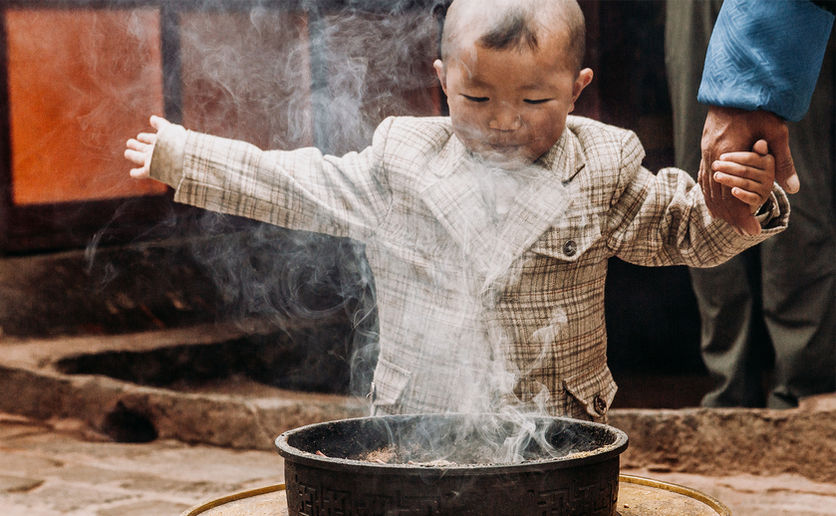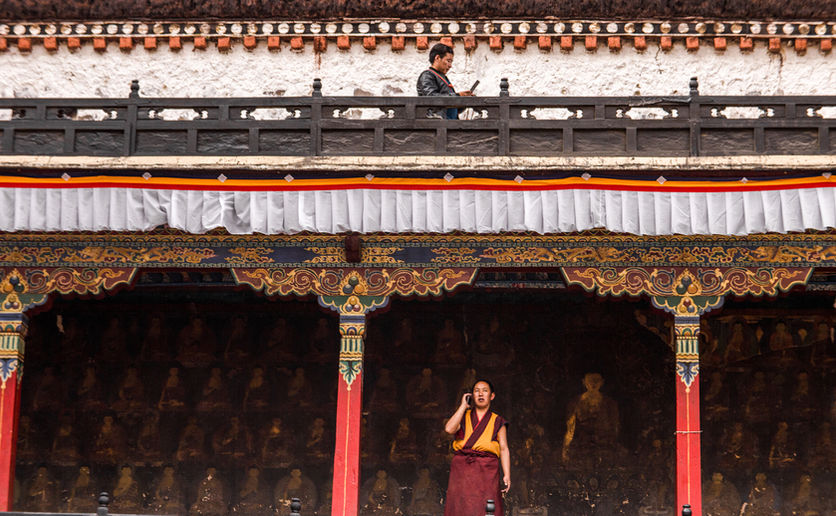Eddy Izuwan Musa & Tristan Yap
The Cycle Empire
Reflections on Tibetan Culture

Photographs
Eddy I.M. (Book) (featured here)
Tristan Yap (Book)
2017
Reflections
Eddy I.M.
2017 - 2019
Canon 6D
Mitakon Creator 85mm
The author, Eddy Izuwan Musa travelled to a distant realm, seeking out a cultural world in complete contrast to his own Malaysian waterfront experience. The Cycle Empire: a journey of philosophical self-contemplation undertaken while exploring a foreign land that is Tibet – pondering the details of its geographical, sociological, and religious conditions, and its dissimilitude to the country of one’s birth.
What are the variables that define Tibetan culture and produce a civilization which sets itself apart from others? Although the telos is to learn another culture without prejudice, comparisons are inevitably made – for the gaze is not pure.
The cultural uniqueness of Tibet, stemming from its geographical, sociological, and religious factors, is juxtaposed against the waterfront-based Malaysian experiences more familiar to the author. The author theorises the variables that define Tibet’s culture and set its people apart from those of other civilizations. The thought process is predicated upon a comparative methodology; Malaysia provides a vantage point of observation rather than operating as a point of bias.
One can only note the progression of one’s thoughts which arise while witnessing an order of monks immersed in debate, or while bathing in the smoky fragrance of herbaceous incense. With tentative awe, one grasps the moment when the master apprehends the Yak, the mountaineer beholds the mountain, the Sanyasi contemplates the cycle of Samsara.
As an aspiring semiotician and art historian, the author will attempt to explore Tibet and its fascinating aspects via an existentialist approach and analytical strategy, using the methodology of semiotics, iconography and iconology. The writing will be accompanied by photographs of Tibet’s picturesque landscapes, architecture and society captured and curated by two photographers throughout the journey.
Purchase a copy today at the following link:
Below is an excerpt sample from the book:

A selective fusion of two distinctive realms forges the foundation of Tibetan rituals and customs. The first realm is that of Buddhism and its Samsara cycle, which focuses on the other world (the world entered upon death). The second realm is that of the Bon, the present world of the living, where the celebration of nature takes significance. It is not so much the worship of the five elements that moves them so, but more of an acknowledgement of them as equal or exalted living entities that co-habit this realm.
Another characteristic of animism, which the Tibetans also share, is the veneration of land deities alongside the practice of Buddhist rituals for prosperity and blessings. I am constantly reminded of the worship of Shinto by the Japanese, who acknowledge the existence of Yokai, Kami, Obakei, and Yurei, alongside their own version of Buddhism.
What strikes me as curious here is the difference of focus, compared to the more Abrahamic religions that I am exposed to. Our focus has always been on the afteralife, as we make preparations for our eventual death with various performances of honourable deeds disguised within a mercantile system, to be granted tokens to be weighed in one’s favour in the hereafter.
The people of the Land of Snows are constantly aware of the connection between both realms, and they acknowledge that their role in this world will affect the other world as much as this one. Interestingly, those who have passed on to the otherworld are considered to have lingering responsibilities towards those living in this world: repeating the cycle of Samsara once again. Individual souls – whether human or animal – are deeply rooted in the circle of life and therefore affect each other. The Tibetans are as dependent on their livestock and farms, as the latter are on them. Their souls are connected to those of the trees and streams, as well as to those of the mountains, the fire, the sky, and the everlasting ecosystem. Cycles within cycles within infinite cycles: Samsara.”
The Cycle Empire:
Reflections on Tibetan Culture
Authors: Eddy Izuwan Musa, Tristan Yap
















